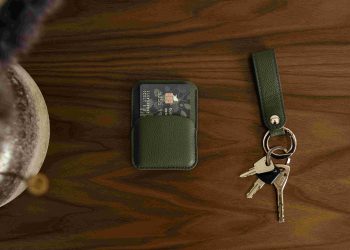Healthy Seasonal Outfit Ideas
Style isn’t just about looking good—it’s about feeling good, and that begins with dressing for the season in a way that nurtures your body and mind.
Our perception of fashion often revolves around aesthetics, but it can be a powerful tool for self-care and adaptive living. Seasonal outfits, when chosen wisely, provide more than comfort—they offer a gateway to balance and vitality.
Using Fashion to Embrace the Changing Seasons
Years ago, I found myself shivering in the depths of winter. My outfit—a trendy but flimsy coat—not only failed to shield me from the cold but left me vulnerable to illness. It was a personal wake-up call: dressing for the season is not a matter of vanity; it’s a matter of practicality and health. Today, I approach seasonal dressing with an interdisciplinary mindset—drawing inspiration from psychology, technology, and even business innovation—to craft principles that balance comfort, style, and health.
The irony of societal norms is glaring — we’re often encouraged to sacrifice function for form, leaving us disconnected from the environment around us. Instead of blindly following fleeting trends, let’s challenge ourselves to leverage seasonal dressing as a tool for better living.
The Science Behind Dressing Smart
Structuring an outfit for seasonal health starts with understanding thermoregulation, the mechanism that keeps your body at its optimal temperature. According to research from the University of Copenhagen, the body’s ability to adapt to external temperatures is deeply linked to performance and longevity. Layering clothing strategically is not just a fashion choice—it’s a physiological necessity. By using breathable fabrics during spring, insulated materials in winter, and UV-protective gear in summer, you create a wardrobe that harmonizes with biology.
Spring: Innovation in Lightness
Spring is synonymous with renewal. As nature awakens, our wardrobes should echo the shift with breathable, lightweight fabrics like cotton and bamboo. Pair a flowy midi dress with tailored layering pieces, such as a cropped jacket or versatile cardigan. Brands focusing on wearable technology now offer temperature-sensitive fabric blends, altering their permeability based on the surrounding environment. For accessories, pastel scarves double as both aesthetic statements and barriers against unpredictable spring winds.
Summer: Prioritizing Protection
It’s easy to associate summer fashion with light and airy designs, but overlooking the importance of UV resistance can be detrimental. Incorporating wide-brim hats, sunglasses, and linen-based apparel isn’t just stylish—it’s an investment in skin health. Use this metaphor: your clothing should act as the sunscreen you wear. Explore garments with built-in UPF protection, which is becoming more widely adopted by sustainable and ethical brands. Pairing them with moisture-wicking socks and shoes enhances comfort for long summer excursions.
Autumn: A Flair for Transitions
Autumn brings complexity. It’s neither frozen nor steaming but fluctuating—a metaphor for life’s gray areas. How you dress can shape your adaptability. Layering is the cornerstone here, but it must be done thoughtfully—a base layer for warmth, a mid-layer for insulation, and an outer shell for wind or rain protection. Think knit sweaters featuring color gradients paired with leather boots that transition seamlessly from a morning drizzle to afternoon sunshine.
Winter: Engineering Warmth
Dressing smart in winter isn’t just about avoiding the cold but optimizing heat retention. Recent advances in clothing technology, such as graphene-infused winter coats, are reshaping the way designers approach warmth. Challenge traditional wisdom that says bundling up is imprecise—opt for thermal-lined layers paired with accessories like fleece-lined gloves and weighted scarves. These are more than details; they’re functional investments in your well-being.
Breaking Free from the Fast Fashion Paradigm
The traditional wisdom of seasonal dressing has often been overshadowed by fast fashion’s relentless push for newness. But it’s time we challenge this narrative. By investing in quality garments that align with seasonal functionality, you’ll build a wardrobe that transcends short-lived trends, reduces environmental impact, and supports personal health.
Sociologists widely agree that the throwaway culture of fast fashion disconnects us from the deeper values of resourcefulness and self-expression. When you curate your outfits based on tactile comfort, environmental alignment, and psychological colors, you redefine what it means to dress well. Dressing should be planned with the same intent as long-term investments, offering returns that enrich both health and happiness.
Encouraging Action: How to Build Your Healthy Seasonal Wardrobe
-
Start with research:
Learn about fabric properties and choose clothing elements that protect you from specific seasonal risks. -
Prioritize versatility:
Select high-quality basics that can be layered and repurposed across seasons without losing functionality. -
Shop sustainably:
Support brands that focus on ethical manufacturing and use eco-friendly materials. -
Experiment intentionally:
Incorporate technology-driven solutions like thermoregulating garments or UV-blocking fibers into your wardrobe. -
Plan ahead:
Rotate clothing storage systems to declutter your space and keep seasonal pieces easily accessible.
Forecasting the Future of Seasonal Fashion
The integration of wearable technology, AI-driven clothing customization, and nanotechnological fabrics heralds a new era for seasonal fashion. Soon, your outfits could act as personal ecosystems, monitoring your body temperature and adjusting insulation levels in real time. Imagine jackets that redistribute water vapor during spring rains or boots that self-modify their grip based on the terrain. The future isn’t about following seasonal changes—it’s about anticipating them.
A Call to Action for Lasting Change
There’s a deeper message woven into the fabric of seasonal dressing: it teaches adaptability, self-awareness, and resilience. These lessons extend far beyond fashion—they’re principles for life. Whether developing a career, navigating social change, or simply striving for better health, the ability to adapt to external shifts is key. Begin refining your wardrobe today—not just for style but for a healthier, more meaningful connection with yourself and the environment.













